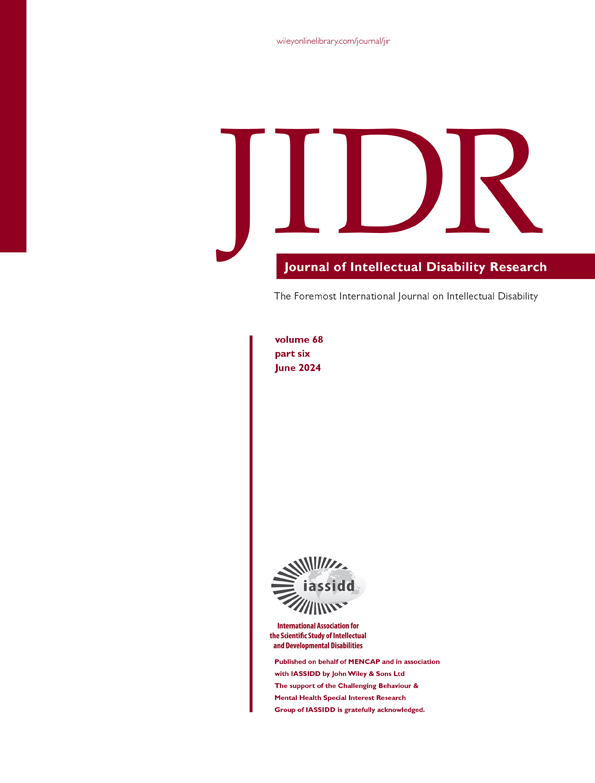Hospitalisation and mortality among privately insured individuals with COVID-19 in the United States: The role of intellectual disabilities and Neurogenetic disorders
Abstract
Background
Individuals with intellectual disabilities (IDs) and neurogenetic conditions (IDNDs) are at greater risk for comorbidities that may increase adverse outcomes for this population when they have coronavirus disease 2019 (COVID-19). The study aims are to examine the population-level odds of hospitalisation and mortality of privately insured individuals with COVID-19 with and without IDNDs IDs, controlling for sociodemographics and comorbid health conditions.
Methods
This is a retrospective, cross-sectional study of 1174 individuals with IDs and neurogenetic conditions within a population of 752 237 de-identified, privately insured, US patients diagnosed with COVID-19 between February 2020 and September 2020. Odds of hospitalisation and mortality among COVID-19 patients with IDNDs adjusted for demographic characteristics, Health Resources and Services Administration region, states with Affordable Care Act and number of comorbid health conditions were analysed.
Results
Patients with IDNDs overall had higher rates of COVID-19 hospitalisation than those without IDNDs (35.01% vs. 12.65%, P < .0001) and had higher rates of COVID-19 mortality than those without IDNDs (4.94% vs. .88%, P < .0001). Adjusting for sociodemographic factors only, the odds of being hospitalised for COVID-19 associated with IDNDs was 4.05 [95% confidence interval (CI) 3.56–4.61]. Adjusting for sociodemographic factors and comorbidity count, the odds of hospitalisation for COVID-19 associated with IDNDs was 1.42 (95% CI 1.25–1.61). The odds of mortality from COVID-19 for individuals with IDNDs adjusted for sociodemographic factors only was 4.65 (95% CI 3.47–6.24). The odds of mortality from COVID-19 for patients with IDNDs adjusted for sociodemographic factors and comorbidity count was 2.70 (95% CI 2.03–3.60). A major finding of the study was that even when considering the different demographic structure and generally higher disease burden of patients with IDNDs, having a IDND was an independent risk factor for increased hospitalisation and mortality compared with patients without IDNDs.
Conclusions
Individuals with IDNDs had significantly higher odds of hospitalisation and mortality after adjusting for sociodemographics. Results remained significant with a slight attenuation after adjusting for sociodemographics and comorbidities. Adjustments for comorbidity count demonstrated a dose–response increase in odds of both hospitalisation and mortality, illustrating the cumulative effect of health concerns on COVID-19 outcomes. Together, findings highlight that individuals with IDNDs experience vulnerability for negative COVID-19 health outcomes with implications for access to comprehensive healthcare.
Conflict of Interest
No conflicts of interest have been declared.
Open Research
Data Availability Statement
The data that produced the findings from this study are available from FAIR Health. Restrictions apply to the availability of these data, given that they were used under license for this study. Please contact FAIR Health regarding access to these data.




